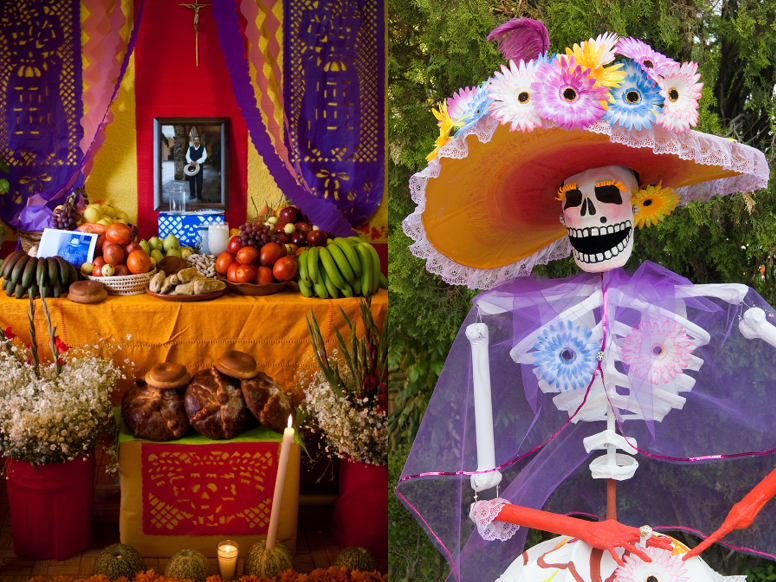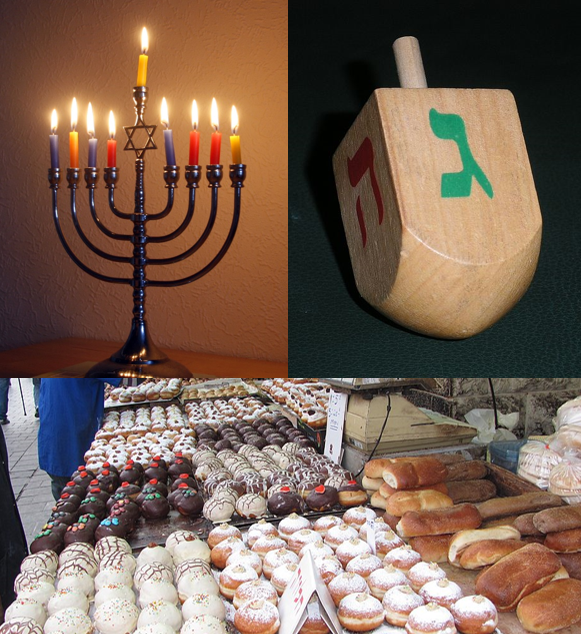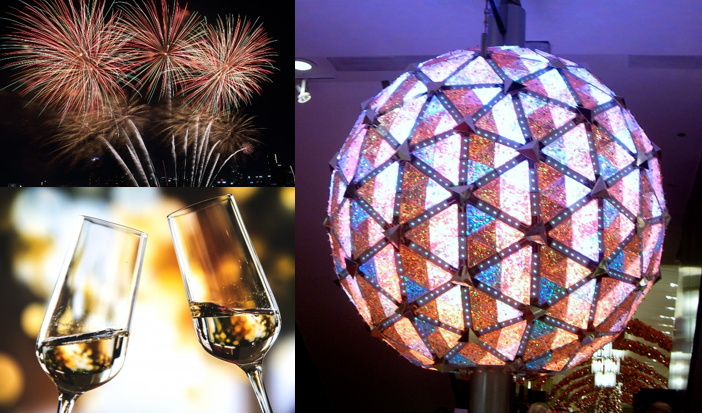As the days become shorter and colder in the North, we need something to keep our spirits up. In the South, the warm weather calls for celebration. At Axletree Solutions, our global teams celebrate many different festivals over the fall and winter months. While each is unique, they all share common themes of gratitude, celebration of life and hope for the future.
The following is a quick look at a few of the international holidays that happen during the Northern Hemisphere’s fall and winter months, and how people celebrate them across the globe.
Halloween

Where: Around the world
When: October 31st
Why: A community-centered holiday, with parades and parties to mark the end of summer. Halloween’s origins date back to the ancient Celtic festival of Samhain (pronounced “saa-win”) when people sometimes wore masks and other disguises to avoid being recognized by spirits. The custom of pumpkin carving to create “Jack–o’-lanterns” also originated from Celtic tradition – in Ireland, people carved scary-looking lanterns out of turnips to scare off evil spirits. As people migrated to the United States, these carvings were increasingly done using the native fruit of pumpkins and over time, pumpkin carving became a central symbol of Halloween celebrations.
How: Over the centuries, Halloween evolved to include costume parties, trick-or-treating, pranks and games. Celebrations, especially among children, involve elaborate costumes and masks. Schools and communities hold Halloween parades. Households prepare candy treats to give to the children who go around neighborhoods “trick-or-treating“.
Diwali

Where: India and among the Indian diaspora
When: October/November, variable
Why:A holiday to celebrate the victory of good over evil, of light over darkness. Hindus in Northern India celebrate the story of King Rama’s return to Ayodhya after he defeated Ravana by lighting rows of clay lamps. In Southern India, they celebrate it as the day that Lord Krishna defeated the demon Narakāsura. To Jains, Diwali marks the nirvana, or spiritual awakening, of Lord Mahāvira. Sikhs celebrate the day that Guru Hargobind Ji, the Sixth Sikh Guru, was freed from imprisonment. Buddhists in India celebrate Diwali as well.
How:Diwali is the Hindu Festival of Lights. It’s a five-day celebration that includes savory and sweet foods, fireworks, colored sand drawings called “rangoli”, and rows of lamps.
Day of the Dead (Dia De Los Muertos)

When: November 1& 2
Why: A holiday to remember and celebrate friends and family members who have passed away. A blend of Mesoamerican ritual, European religion and Spanish culture, the holiday is a time when families welcome back the souls of their deceased relatives for a brief reunion that includes food, drink and celebration. La Calavera Catrina or “Elegant Skull”, a female skeleton adorned with makeup and dressed in fancy clothes, is one of the most recognizable Day of the Dead icons.
How: Families create “ofrendas”, or offerings, to honor family members who have passed. These altars are decorated with bright yellow marigold flowers, photos of the departed, and the favorite food and drink of the ones being honored. People also wear skull masks and eat sugar candy molded into the shape of skulls.
Hanukkah

When: Eight-day celebration, late November to late December, variable
Why: The Hebrew word Hanukkah means “dedication,” and is thus named because it celebrates the rededication of the Second Temple in Jerusalem. While there are a few different interpretations as to the history and origin behind Hanukkah, one story mentioned in the Talmud, a primary Jewish religious text, is as follows: During the rededication ceremony for the Second Temple, there was not enough oil in supply to keep the “menorah”, the traditional nine-branched candle, burning for more than one night. Despite this, the menorah’s candles remained lit for eight nights! This led the Jewish sages to dedicate the same period as an annual festival, in remembrance of this miracle.
How: Hanukkah is the Jewish Festival of Lights. Hanukkah celebrations revolve around the kindling of the nine-branched menorah over the course of the eight–night festival. Gifts of money known as “gelt” are given to children. It is also customary to play with a spinning top called a “dreidel”. Traditional foods include fried potato fritters called “latkes” and jam-filled doughnuts called “sufganiyot”.
Thanksgiving Day

When: 2nd Monday in October (Canada), 4th Thursday in November(USA)
Why: Thanksgiving is a holiday in which people celebrate the end of a successful harvest season and give thanks for the blessings of the past year. In the United States, Thanksgiving became a yearly tradition after the first harvest feast shared between the English colonists (Pilgrims) of Plymouth and the Wampanoag people in 1621. In Canada, Thanksgiving predates American Thanksgiving by 43 years, when in 1578 English explorer Martin Frobisher and his crewmates shared a meal and gave thanks for their safe arrival in North America. Almost 50 years later, settlers under Samuel de Champlain hosted frequent and large feasts between the French and the native Mi’kmaq tribe, giving thanks for their food and good health.
How: Families gather to feast on the traditional Thanksgiving meal, which typically includes turkey, bread stuffing, potatoes, cranberries, and pumpkin pie.
Christmas

When:December 25th / January 7th (Eastern Orthodox)
Why: A festival celebrating the birth of Jesus, Christmas or Yule is the feast of the winter solstice. While maintaining its roots in Christianity, Christmas has also evolved as a secular family holiday celebrated across the globe. It is a holiday to celebrate with family and friends, and to share with those who are less fortunate.
How: Traditions from across the world, like the Yule Log from Norway, the Christmas Tree from Germany, the Celtic belief of hanging mistletoe, and England’s greeting cards and plum pudding, have now traveled across the globe and become part of Christmas celebrations everywhere. But the most popular Christmas custom is gift–giving. Millions of children around the world look eagerly forward to the arrival of Santa Claus on his sleigh laden with special gifts just for them. Christmas music and caroling, exchange of greeting cards, church services, family feasts and the display of various decorations, including Christmas trees, lights, nativity scenes, garlands, wreaths, mistletoe, and holly are all part of the celebrations. In the Southern Hemisphere, Christmas occurs in the summer months, where beach time and outdoor barbecue celebrations are common.
New Year

When: January 1st globally (Regional celebrations vary)
Why: New Years is a celebration of the date and time at which one calendar year ends and the new one begins. Many around the world see it as an opportunity for new beginnings and as hope for a bright future.
How: In many countries, New Year’s celebrations begin on the evening of December 31st – New Year’s Eve – and continue into the early hours of January 1st. Celebrations involve New Year’s parties, watching fireworks, singing songs to welcome the new year, and making resolutions for personal growth in the new year. In the United States, the most iconic New Year’s tradition is the lowering of the Times Square Ball in New York City, counting down the last 10 seconds until the stroke of midnight.
While there are many more festivals celebrated around the world, these are some of the most well-known holidays celebrated in the Northern Hemisphere’s fall and winter months. For any of the above holidays that you celebrate, we hope you spend them with good food, laughter, warmth and cheer.
From all of us at Axletree, we wish you and yours a safe and warm holiday season. Have a healthy and prosperous new year!
Written by Sindhura Rao VN
December 20, 2020



